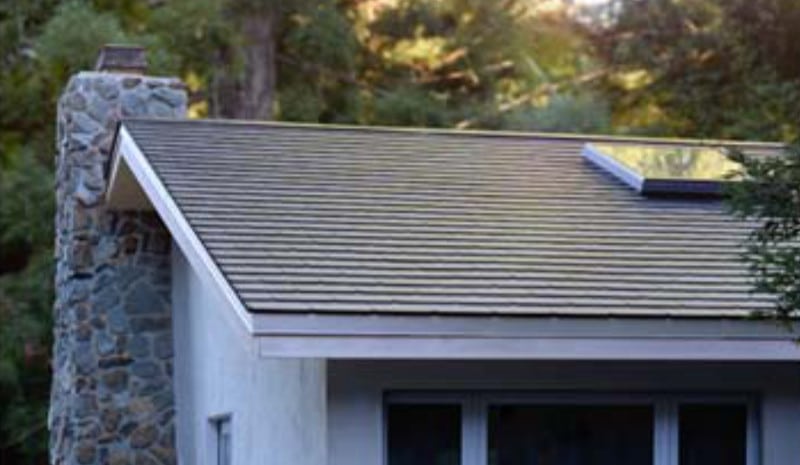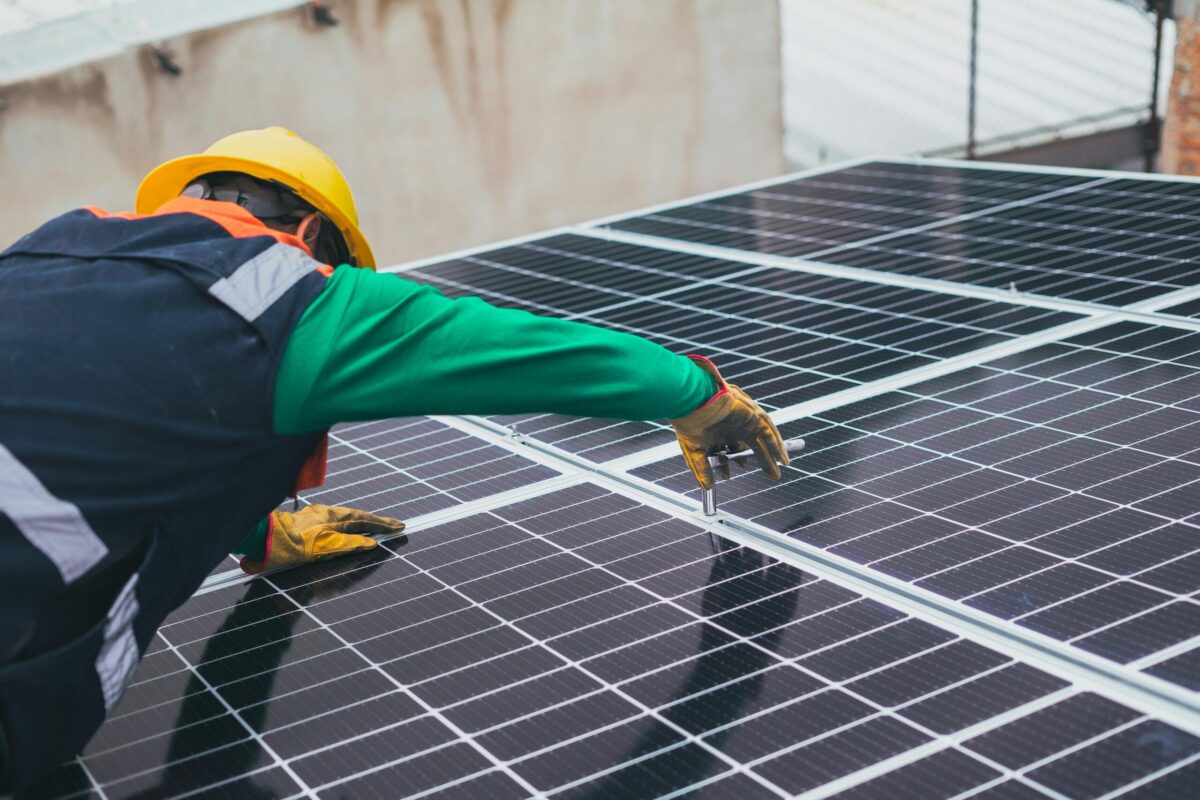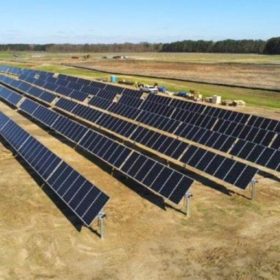Tesla’s release of its quarterly results tonight was dominated by the beginning of mass production of its Model 3 vehicles, which officially began on Friday night. However, there was significant news for its solar and energy storage business.
Most notably, Tesla revealed in its letter to shareholders that it has begun installing its long-awaited Solar Roof product – but so far only on a pilot basis, on the homes its employees, as it works out the kinks in the product.
“We chose (our employees) to be our first customers to help perfect all aspects of Solar Roof customer experience,” notes Tesla in its letter to shareholders.
“I have it on my house, JB (Straubel) has it on his house,” noted Tesla CEO Elon Musk. The Solar Roof tiles have already received Class A fire rating from Underwriters’ Laboratories, as well as winds rating from ASTM International, and carry a warranty for the full life of the house.
The Solar Roof tiles going on the homes of Tesla employees are being produced in the company’s pilot factory in Fremont, as the solar “Gigafactory” in upstate New York is still not complete. Tesla says that it expects to be pumping out Solar Roof products from the Buffalo factory by the end of the year, but there have been few recent announcements regarding progress on completing the giant factory.
But if Tesla is less forthcoming about the details, it remains positive about the Gigafactory. “It is going to be a kick-ass facility,” said Musk on the results call. “We made that commitment to the state of New York, and we plan to keep that commitment.”
Musk also noted that it is still working on multiple aspects of the Solar Roof. “It is a very challenging technical task to get this right, to get the costs right, to streamline the installation process,” notes Musk.
But while customers wait for their Solar Roofs, the rest of Tesla’s solar business has contracted. Deployment of solar fell 12% year-over-year to 176 MW, and Tesla announced that it has completely pulled out of door-to-door sales, instead shifting all sales to its Tesla stores, online sales and other means.
However, the company also deployed 97 MWh of lithium-ion battery storage systems, while its massive 52 MWh battery in the Hawaiian island of Kaua’i received certification. This battery is paired with a utility-scale solar plant, and will allow Kaua’i to use this electricity during the evening peak, while allowing solar to meet a higher portion of demand than in any nation known to pv magazine.
Tesla has emphasized moving the company’s solar business in the direction of greater profitability, and along those lines third-party solar sales fell to only 67% of its business. Additionally, the company monetized a portfolio of already deployed solar leases by selling an equity interest in them for $313 million in gross revenues.
The combined “Energy generation and storage” business brought in $287 million in sales, which while up 34% from the previous quarter, is still slightly over 10% of Tesla’s revenue. Year over year comparisons are not possible because the division did not exist before Tesla’s acquisition of SolarCity.
Overall the division has a higher gross margin than Tesla’s automotive business, however Tesla does not provide operating margins by division. Overall Tesla continues its path of rapid growth while raising truly massive amounts of capital, and it is still burning through a ton of money. During the quarter Tesla reported a net loss of $401 million, even higher than its $397 million loss in Q1.
Tesla’s shareholders do not seem to mind. During late July Tesla shares peaked at over $380 per share, and since the spring the company has had a higher market capitalization than either GM or Ford since this spring.
This content is protected by copyright and may not be reused. If you want to cooperate with us and would like to reuse some of our content, please contact: editors@pv-magazine.com.









Typo: The battery in Kauai is 52 MWh
Fixed. Thank you for alerting us to this typo.
I wonder if they permitted these installations on the execs houses. Also… No gutters?
Has anyone shown/reported on how each “shingle” will be physically wired back to the meter?
This is not a detail that we at pv magazine have looked into.
That “detail” is a very big deal when you are talking about a solar system. Placing down solar modules on a roof are typically about 15% of my labor time and concern when I install a solar PV system. And they (Tesla) haven’t been forthcoming about the real difficult and expensive part of a complete solar system? Typical of the Musk dream / marketing scam.